The other day, a discussion about ‘high concept’ broke out on one of the published author loops I belong to. It seemed that some writers were getting confused between a well-written logline or pitch (which should succinctly showcase your high concept) and the high concept itself.
Let me explain.
The best explanation of high concept I have ever seen was a guest blog post on Writers Digest by Jeff Lyons. You can read his whole post here: Writers Digest – 7 Qualities of High Concept Stories
 As Jeff explains, a high concept story should have as many of the following seven elements as possible (the more of them the story has, the ‘higher’ the concept). Further to that, if your logline (one or two sentence pitch) can illustrate/evoke all the below qualities in just a few words or one-line, then huzzah, you have a high concept pitch. For instance, let’s take JAWS. Here’s the one liner that describes the high concept – Enormous, relentless shark terrorizes coastal New England town attacking victims on the 4th of July weekend. That one line evokes a powerful setting, a frightening antagonist, high stakes and a relatable protagonist (the town). Even if you had never seen the movie, a load of images immediately pop into your head, you completely understand the thrust of the story, and that’s the point of a high concept logline. Here’s how that one line fulfills all of the qualities below (I’ve put the specific Jaws example in brackets next to the quality):
As Jeff explains, a high concept story should have as many of the following seven elements as possible (the more of them the story has, the ‘higher’ the concept). Further to that, if your logline (one or two sentence pitch) can illustrate/evoke all the below qualities in just a few words or one-line, then huzzah, you have a high concept pitch. For instance, let’s take JAWS. Here’s the one liner that describes the high concept – Enormous, relentless shark terrorizes coastal New England town attacking victims on the 4th of July weekend. That one line evokes a powerful setting, a frightening antagonist, high stakes and a relatable protagonist (the town). Even if you had never seen the movie, a load of images immediately pop into your head, you completely understand the thrust of the story, and that’s the point of a high concept logline. Here’s how that one line fulfills all of the qualities below (I’ve put the specific Jaws example in brackets next to the quality):
7 (MAKE THAT 8!) QUALITIES OF HIGH-CONCEPT STORIES:
1. High level of entertainment value [shark attacks amid a setting everyone can immediately understand, the beach on the 4th of July]
2. High degree of originality [a successful movie about a shark attacking had not yet been done]
3. Born from a “what if” question [what if a shark came close to land and became a lurking menace in the ocean]
4. Highly visual [ummm…teeth, fins, blood, open ocean, very visual no matter how you slice it]
5. Clear emotional focus [life and death on the line, beat the shark or die – no clearer focus than that!]
6. Inclusion of some truly unique element [the shark is big, relentless and coming back for more victims. Unlike the old horror creature flicks featuring a vampire, a mummy, or a wolf man, the shark becomes a real life monster everyone can take seriously.]
7. Mass audience appeal to a broad general audience, or a large niche market [Jaws had a premise most people could immediately relate to and the threat was to everyone on the beach, men, women, children, families. The fear became universal, no pun intended!]
8. Incredibly memorable characters [the shark itself (implies man vs. nature), Quinn, the Chief, heck even the mother who slaps him on the dock for her son getting eaten. We all remember those scenes because the characters were well…memorable.] Of course, you  can’t tell what the characters in JAWS will be like from the one liner above, but once you see the movie you ‘feel’ like it was a high concept because of the memorable characters, so I always include it as the eighth element. Who hasn’t seen a movie that fell flat because the story was there, but the acting or characters sucked? Or read a book that had a great premise, but the characters were flat?
can’t tell what the characters in JAWS will be like from the one liner above, but once you see the movie you ‘feel’ like it was a high concept because of the memorable characters, so I always include it as the eighth element. Who hasn’t seen a movie that fell flat because the story was there, but the acting or characters sucked? Or read a book that had a great premise, but the characters were flat?
So, a high concept is not just a one-liner or this-meets-that. There are a lot of this-meets-thats that simply don’t work because in stating them they don’t fulfill enough of the eight qualities above. For instance, Rocky meets The West Wing. Ummm, what? I can’t visualize that at all. I can’t tell you what the emotional focus is. Mass audience appeal, not really. So, in my mind, it’s not just the high concept statement itself, but what eight qualities the high concept statement fulfills and evokes in the listener’s mind. In other words, not every one-liner or logline is high concept just because you can boil your story down to one sentence.
I can boil the story of my day today down to one line: Stay at home mom runs errands, juggles household tasks, and looks after children, all while dreaming of writing her next book. There, I boiled my story down to one-line but it’s hardly high concept, LOL.
 Now what about something like this: Peter Pan takes a holiday in Wonderland, where he becomes smitten with a young girl named Alice, only to learn he cannot stay in Wonderland or follow Alice back home, because he will grow old.
Now what about something like this: Peter Pan takes a holiday in Wonderland, where he becomes smitten with a young girl named Alice, only to learn he cannot stay in Wonderland or follow Alice back home, because he will grow old.
Okay so it’s not my best, but it’s got a lot more going for it than the story of my day. If done right, it would definitely have a high level of entertainment value because of the world-building, beloved characters everyone could relate to, highly visual, etc. And it’s definitely born from a what if…what if Peter Pan took a holiday in Wonderland? Clear emotional focus, sure – will the boy get the girl, even if it means giving up his most precious possession, his youth? Original, perhaps. Perhaps, not. I’m not sure if anyone’s written it yet, LOL.
Now, in my mind, no discussion of high concept would be complete without talking about the ninth ingredient, the secret sauce. If you take all eight ingredients above, stir gently and add the secret sauce you’ll have a NYT best-seller or a blockbuster movie. What is the secret sauce? Well, in the case of a book, the secret sauce is an ‘unputdownableness’ or uniqueness you can’t easily define. Perhaps it’s the writing style. Perhaps it’s the voice. Perhaps it’s the synergy of just the perfect eight ingredients being stirred together. Perhaps it’s how perfectly the eight ingredients blend and the flavors feed off one another creating a certain magic as they stew in the reader’s mind. All I can tell you is just like a good meal, if you find yourself devouring a book in one sitting, it probably had the secret sauce.
And on that note, I’m off to go start dinner because I’ve made myself hungry. Happy writing!
~Marlo
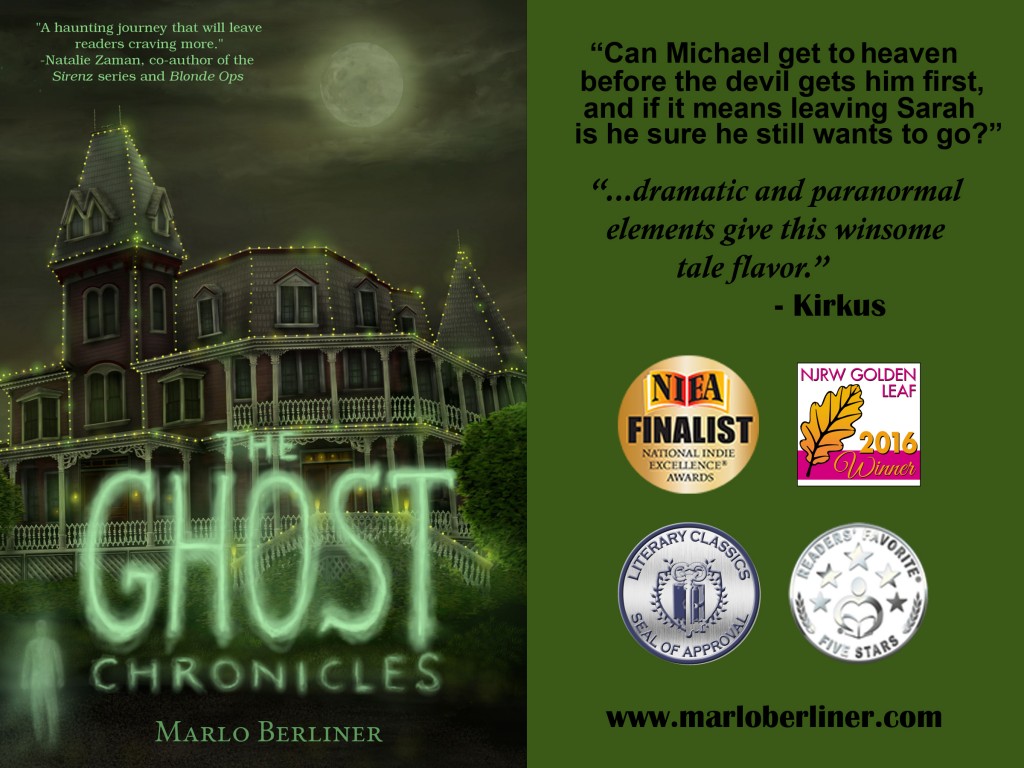

 I am beyond thrilled to announce that THE GHOST CHRONICLES won the 2016 Golden Leaf Award for Best First Book this past Friday night! This was a dream come true for me. When I attended my first New Jersey Romance Writers Conference back in 2008, I remember being at the award ceremony and thinking, someday I want to be up there. And now it’s happened. I am officially an award-winning author. With my very first book too. I am one happy writer right now. Congratulations to all my fellow Golden Leaf Winners!
I am beyond thrilled to announce that THE GHOST CHRONICLES won the 2016 Golden Leaf Award for Best First Book this past Friday night! This was a dream come true for me. When I attended my first New Jersey Romance Writers Conference back in 2008, I remember being at the award ceremony and thinking, someday I want to be up there. And now it’s happened. I am officially an award-winning author. With my very first book too. I am one happy writer right now. Congratulations to all my fellow Golden Leaf Winners! And I am so grateful to everyone who helped me achieve this wonderful goal. First, much love and thanks go to my family: my husband, Chris, my sons, Michael and Andrew, and to my Mom, Dad, sister and brother for their unwavering support and faith in me. To my dear friend Beth-Ann Kerber, who first heard my crazy idea to write a book and didn’t tell me I was crazy. To all my writing friends, but especially to Brynn Chapman, Dan Krippene, Natalie Zaman, Charlotte Bennardo, KT Hanna, Jami Nord, Veronica Blade, Katia Raina, and Robin Haseltine for reading, critiquing and generally sharing your knowledge. To Amy Deluca, who sent me the most encouraging email about this manuscript at the exact moment I needed it most.
And I am so grateful to everyone who helped me achieve this wonderful goal. First, much love and thanks go to my family: my husband, Chris, my sons, Michael and Andrew, and to my Mom, Dad, sister and brother for their unwavering support and faith in me. To my dear friend Beth-Ann Kerber, who first heard my crazy idea to write a book and didn’t tell me I was crazy. To all my writing friends, but especially to Brynn Chapman, Dan Krippene, Natalie Zaman, Charlotte Bennardo, KT Hanna, Jami Nord, Veronica Blade, Katia Raina, and Robin Haseltine for reading, critiquing and generally sharing your knowledge. To Amy Deluca, who sent me the most encouraging email about this manuscript at the exact moment I needed it most.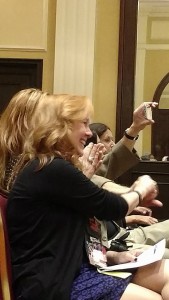
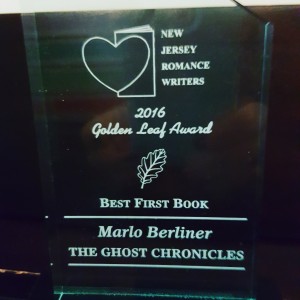

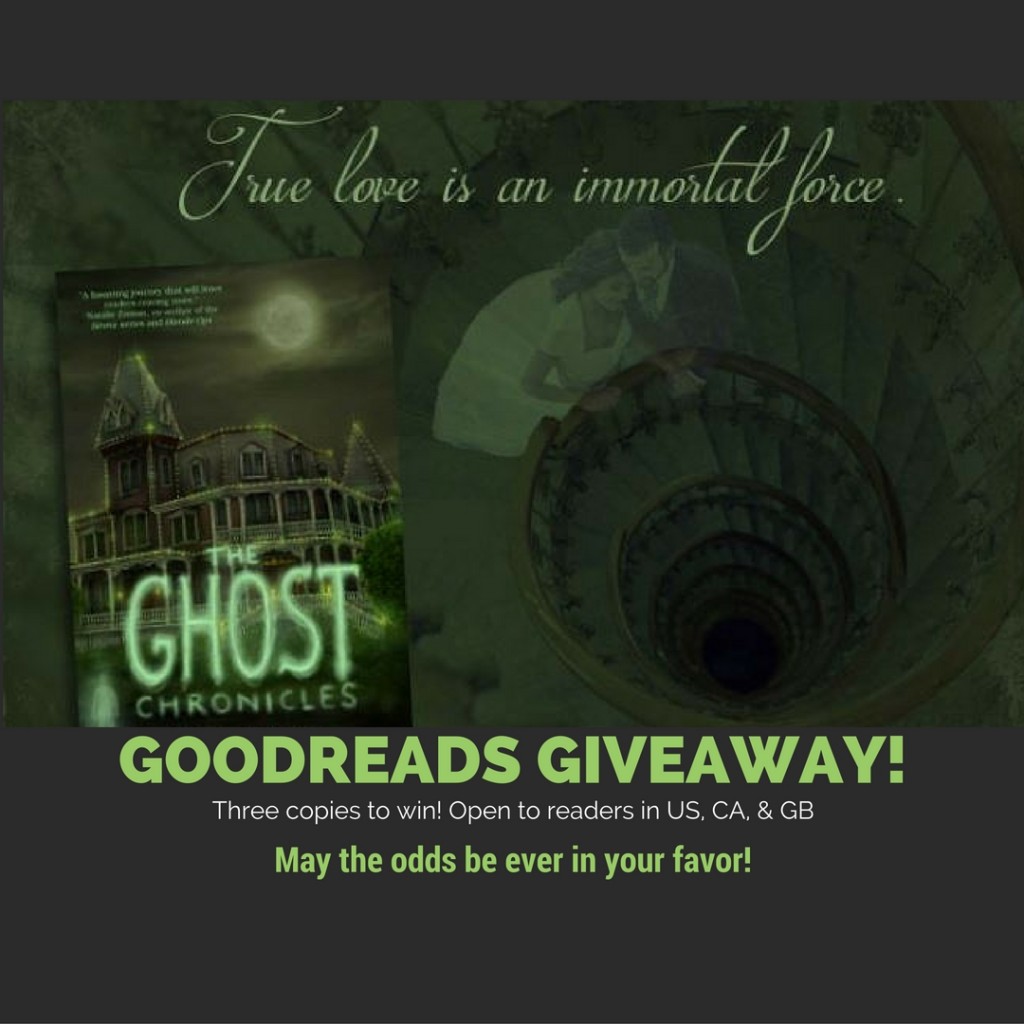
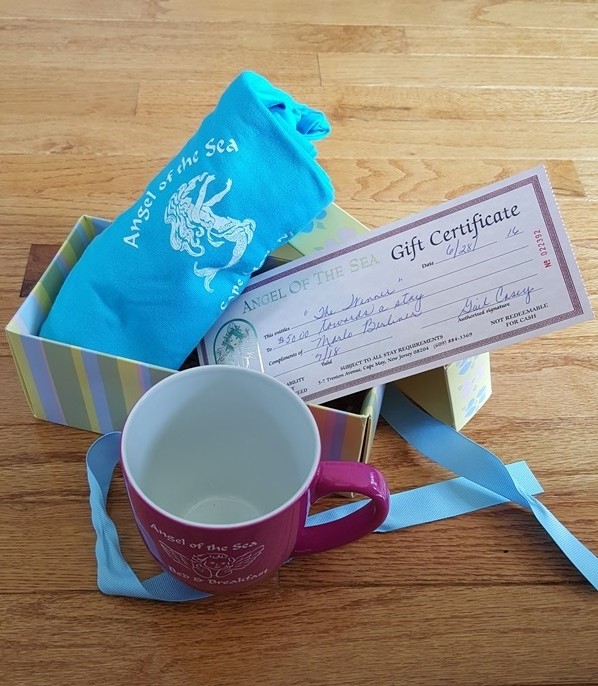
 The idea of two complete strangers getting hitched has always intrigued me, for one simple reason—why would they do such a thing? Could such a relationship succeed? By successful relationship, I understand not only the longevity of the marriage…but is it possible for the participants to actually fall in love with each other in such a strange arrangement? Love is found in the most unexpected places.
The idea of two complete strangers getting hitched has always intrigued me, for one simple reason—why would they do such a thing? Could such a relationship succeed? By successful relationship, I understand not only the longevity of the marriage…but is it possible for the participants to actually fall in love with each other in such a strange arrangement? Love is found in the most unexpected places. began writing when her kids were still very young, squeezing a few paragraphs at a time between the hectic schedule of raising three children, and working full time in the catering industry. She wrote many books before considering having them published. Now that the children have all made lives for themselves, there is more time for writing.
began writing when her kids were still very young, squeezing a few paragraphs at a time between the hectic schedule of raising three children, and working full time in the catering industry. She wrote many books before considering having them published. Now that the children have all made lives for themselves, there is more time for writing.
 As Jeff explains, a high concept story should have as many of the following seven elements as possible (the more of them the story has, the ‘higher’ the concept). Further to that, if your logline (one or two sentence pitch) can illustrate/evoke all the below qualities in just a few words or one-line, then huzzah, you have a high concept pitch. For instance, let’s take JAWS. Here’s the one liner that describes the high concept – Enormous, relentless shark terrorizes coastal New England town attacking victims on the 4th of July weekend. That one line evokes a powerful setting, a frightening antagonist, high stakes and a relatable protagonist (the town). Even if you had never seen the movie, a load of images immediately pop into your head, you completely understand the thrust of the story, and that’s the point of a high concept logline. Here’s how that one line fulfills all of the qualities below (I’ve put the specific Jaws example in brackets next to the quality):
As Jeff explains, a high concept story should have as many of the following seven elements as possible (the more of them the story has, the ‘higher’ the concept). Further to that, if your logline (one or two sentence pitch) can illustrate/evoke all the below qualities in just a few words or one-line, then huzzah, you have a high concept pitch. For instance, let’s take JAWS. Here’s the one liner that describes the high concept – Enormous, relentless shark terrorizes coastal New England town attacking victims on the 4th of July weekend. That one line evokes a powerful setting, a frightening antagonist, high stakes and a relatable protagonist (the town). Even if you had never seen the movie, a load of images immediately pop into your head, you completely understand the thrust of the story, and that’s the point of a high concept logline. Here’s how that one line fulfills all of the qualities below (I’ve put the specific Jaws example in brackets next to the quality): can’t tell what the characters in JAWS will be like from the one liner above, but once you see the movie you ‘feel’ like it was a high concept because of the memorable characters, so I always include it as the eighth element. Who hasn’t seen a movie that fell flat because the story was there, but the acting or characters sucked? Or read a book that had a great premise, but the characters were flat?
can’t tell what the characters in JAWS will be like from the one liner above, but once you see the movie you ‘feel’ like it was a high concept because of the memorable characters, so I always include it as the eighth element. Who hasn’t seen a movie that fell flat because the story was there, but the acting or characters sucked? Or read a book that had a great premise, but the characters were flat? Now what about something like this: Peter Pan takes a holiday in Wonderland, where he becomes smitten with a young girl named Alice, only to learn he cannot stay in Wonderland or follow Alice back home, because he will grow old.
Now what about something like this: Peter Pan takes a holiday in Wonderland, where he becomes smitten with a young girl named Alice, only to learn he cannot stay in Wonderland or follow Alice back home, because he will grow old.